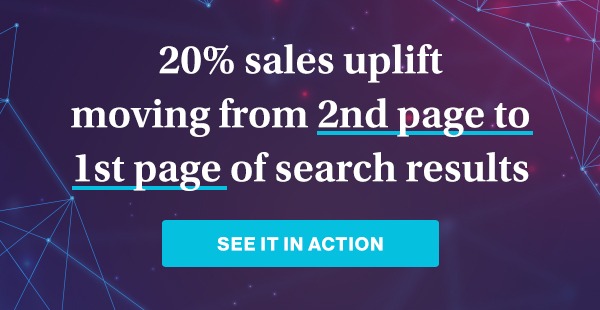The best thing about January is the opportunity to start again, a general optimism for doing better retail planning than last year . More so for retail, being one of the hardest hit industries last year. As retailers re-evaluate 2020’s retail planning decisions, the overarching theme for Budget ‘21 is ‘uncertainty’, given the current political climate, repercussions of the COVID-19 pandemic, a looming trade war, and data privacy concerns. With these uncertainties, tech budgets are getting trickier to put down your current retail planning strategies. The added market pressure and critical industry and consumer preference shifts are giving rise to many new avenues to spend on: Data security, HR management, POS systems, warehouse management, pricing solutions, supply chain automation, BI, customer experience, etc.
Naturally, competing company goals don’t make it easier to decide how to slice the pie.
Which is why it’s important to come up with an answer to this singular question:
Which technology is critical to growing your retail business?
It’s obvious that every enterprise solution promises growth at some level. What’s left to be determined is:
- How direct is the impact?
- How immediate are the returns or performance spikes?
- Is it a differentiator that will give your company a strategic edge over the competition?
Once you start justifying each expense in your retail budget with the above questions, the choices become simple.
Step One: Reverse Engineer Your Business Goals for 2020
Although the end-goals of retail businesses tend to remain consistent and are financially driven, the objectives and strategies on how the company gets there can shift each year. Determine where the most pressing priorities lie for the overall company and key departments. Make sure you’re in the know on what each department is pitching for the next year, what the market tendencies are, and what really applies to your business and translates into direct profit.
Work backward and determine the key technology drivers for optimal outcomes and then allocate a budget at those keystones with room to grow or divert. Tech budgets are often driven by cost-reduction rather than strategic business growth. While planning, retail companies need to start measuring against business outcomes. IT departments will become revenue drivers if they are involved in business strategies from the start.
This new age of retail has forced retail companies to become data harnessing centers first. The times demand that the technology you use and build becomes your competitive differentiator. And 2020 has proved that once again. With COVID further accelerating the shift to eCommerce, brands and retailers that could quickly pivot to a unified digital-first approach won big while those who couldn’t were vanquished. Leveraging tech investments for retail growth is not easy with all the noise and options available, but retailers who have managed to be competitive on this front are reaping heavy rewards.
Step Two: Evaluate With Set Priorities
During retail planning, Always pick proven performance over market hype.
Solutions for which you can trace back every dollar worth of return to the use of the software is a keeper. So is the one that your team(s) has come to depend on every day to get their job done. Gather and analyze all metrics that support the impact of the programs and services you’re justifying your retail budget for the next fiscal year. In case different teams have conflicting priorities (and there will always be a few), it’s always wiser to focus on needs that directly affect the customer experience and buying decisions.
Retailers too often get tempted to divert funds to areas that improve operational efficiencies and give more weight to tools that the team has grown comfortable using. These are factors you must consider, but not over customer engagement.
Some technology solutions are great for strengthening one aspect of the business, like CRM or POS. And then there are some that can bear the weight of several departments at once, like Inventory Management or Omni Channel Optimization. Clearly, the latter deserve a bigger share of the pie. When there’s a budget crunch and you have to choose, always engage SaaS providers who can pilot a project and prove the ROI before you roll it out and scale it for the entire company. Keeping a flexible year-round budget comes handy here.
Step Three: Scale It Right
Often during retail planning, decision makers forget the scalable dimensions when accounting budgets for tech services and products. A large chunk of unanticipated expenses later in the year are from layering subscription plans over plans to accommodate a growing business.
Don’t wait till Q3 to realize this. Chalk out expense forecasts while planning your yearly budget and allow incremental budget pockets. Being prepared to scale up later saves operational costs and revenue loss from delays and setbacks, not to mention time wasted from regrouping and pending approvals.
Making Every Budget Dollar Count
By making every penny accountable for business growth, you can make technology an integral part of 2021’s retail planning strategy. The right balance of foresight and flexibility in your budget can become a winning formula for tech investment. There is little value in going through the budget process without proper periodic and timely analysis of actual results vs. budget.
As you decide on the right solutions to grow your retail business and improve revenues this year, we urge you to book a demo with us to understand how Intelligence Node’s AI driven price monitoring, assortment, visibility, MAP monitoring, and competitive intelligence solutions can prove to be an effective investment in your retail budget this year as it has been for 100+ category leaders as well as small and mid-sized retailers across the globe.
Our clients report growth in sales by up to 10%, a 15% reduction in operational costs for an in-house data team, and up to 3X revenue growth. The reported growth is quarterly, making us your best bet for the quickest turnaround. It helps that we are the most affordable retail analytics provider in the segment!
References:
- State of the Industry Research Series: The New Cost Structure of Retail IT
- Where Should a Retailer Spend Its Technology Budge





